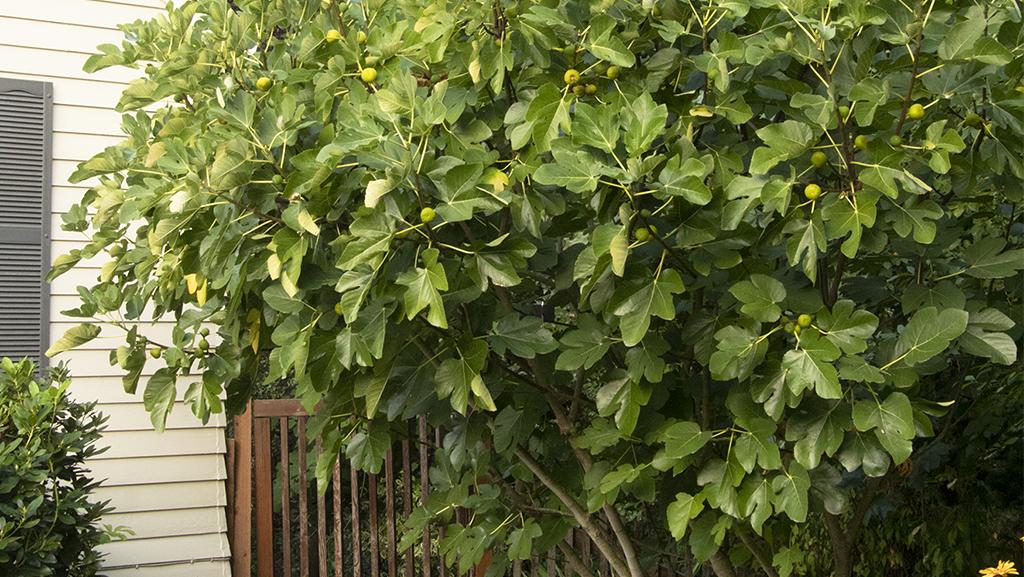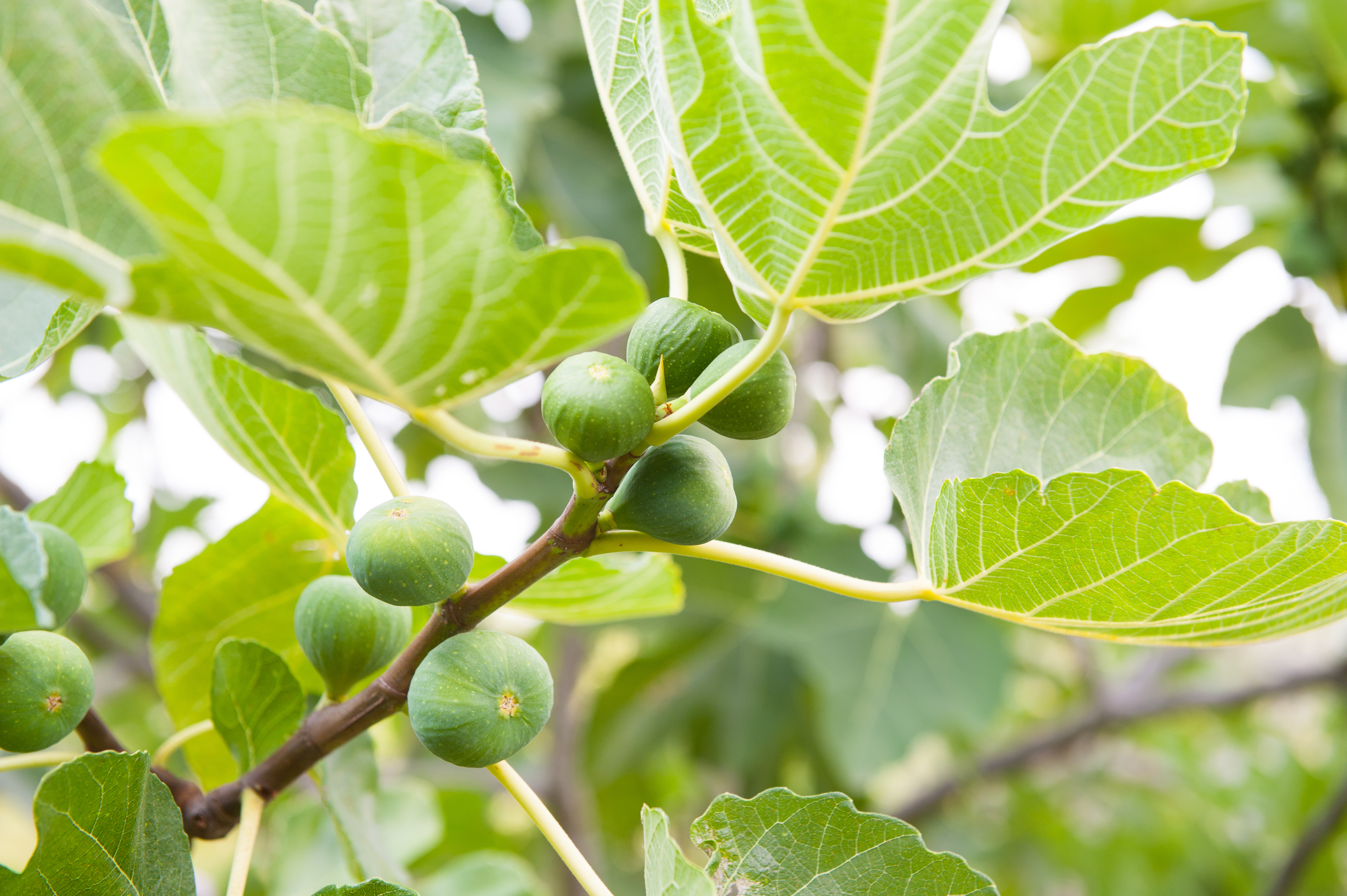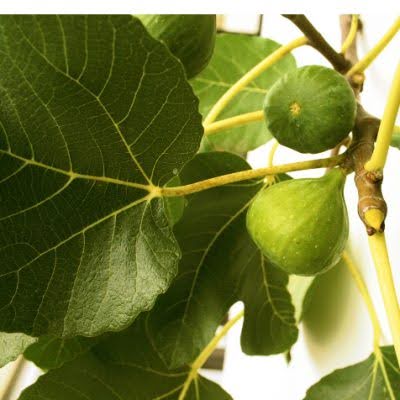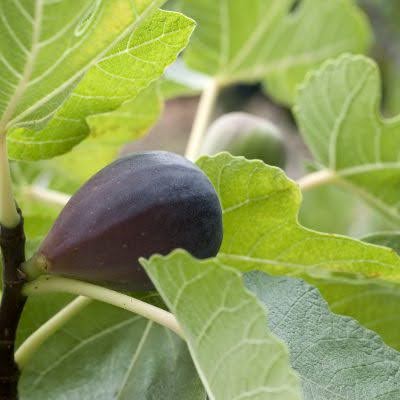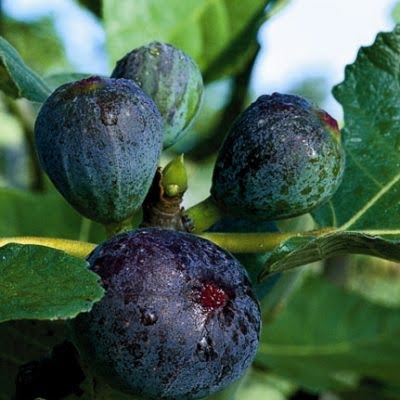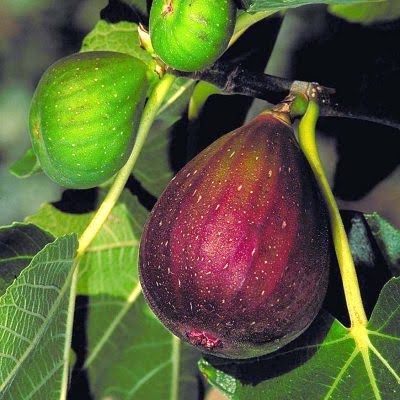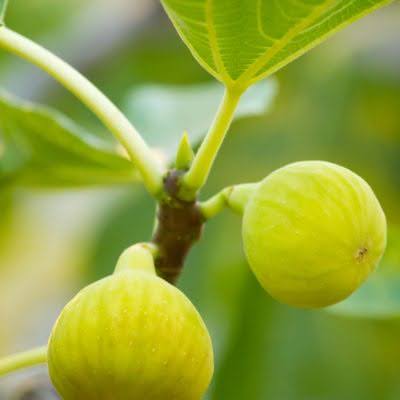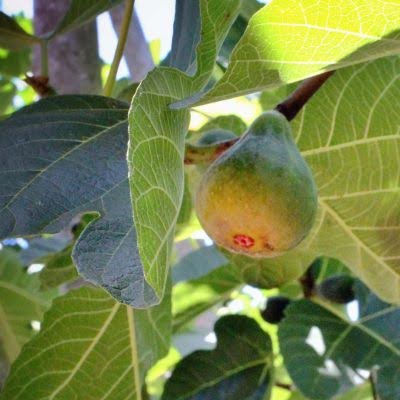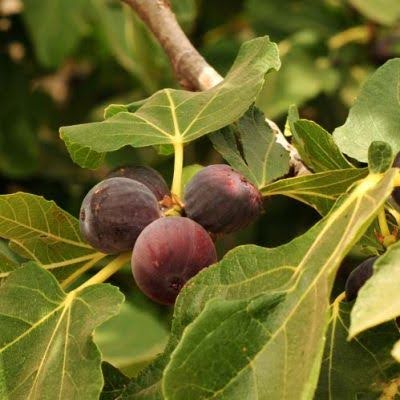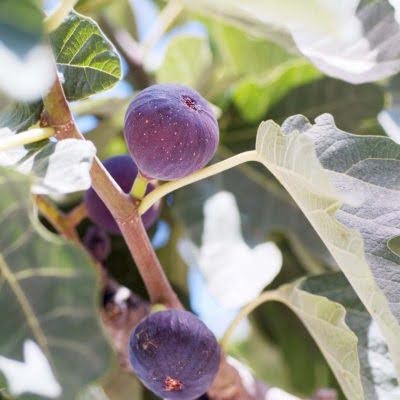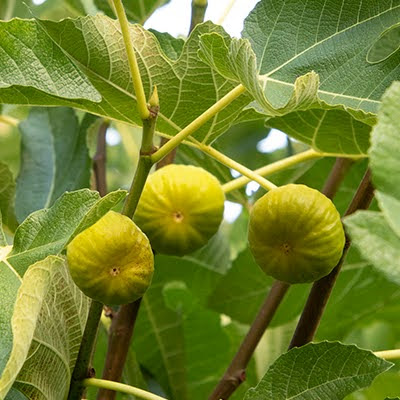Is there a tree more outrageously sensual than the fig? Those iconic leaves, the sculptural branching habit, and those sweet-as-honey fruits are the stuff of legends and lore. Cleopatra dished them up to Mark Antony. Adam and Eve found the foliage to be a handy coverall. Nations went to war over them.
Figs are also a bit of a botanical oddity as they’re not actually “fruits” but a mass of inverted flowers. Wait, what? Yes, the flowers are inside the “fruits,” and what you are eating are the blooms. (Impress your friends–this structure is known botanically as a syconium.)
Best eaten lusciously ripe and sun-warmed straight off the tree. Figs can vary in size, shape, flavor, texture, and time of harvest. They can be black, green, brown, violet, yellow, or purple. Self-fruitful, so you need only one plant to produce fruit that is easy to grow. There's one for just about every size garden (and several that are quite cold-tolerant). Growing fig trees is also relatively easy, even for novice gardeners.
Follow along for a complete guide on how to grow and care for fig trees!
How, When, and Where to Plant Fig Trees
When selecting a fig tree—known scientifically as Ficus carica—choosing a variety that suits your local climate ensures the best growing experience and enjoyment of the fruits. Fig trees thrive in warm, dry summers and mild winters, and while they can tolerate many different temperatures, they do have limits.
Planting with the proper growing conditions is crucial for their development. Early spring, after the last frost, is ideal as it gives the plant plenty of time to establish roots before the heat of summer. Fig trees thrive in full sun and love the reflected heat of walls and buildings. Don't hesitate to provide your fig tree with ample sunlight, as they flourish in bright spots. Generally, the more sun, the better.
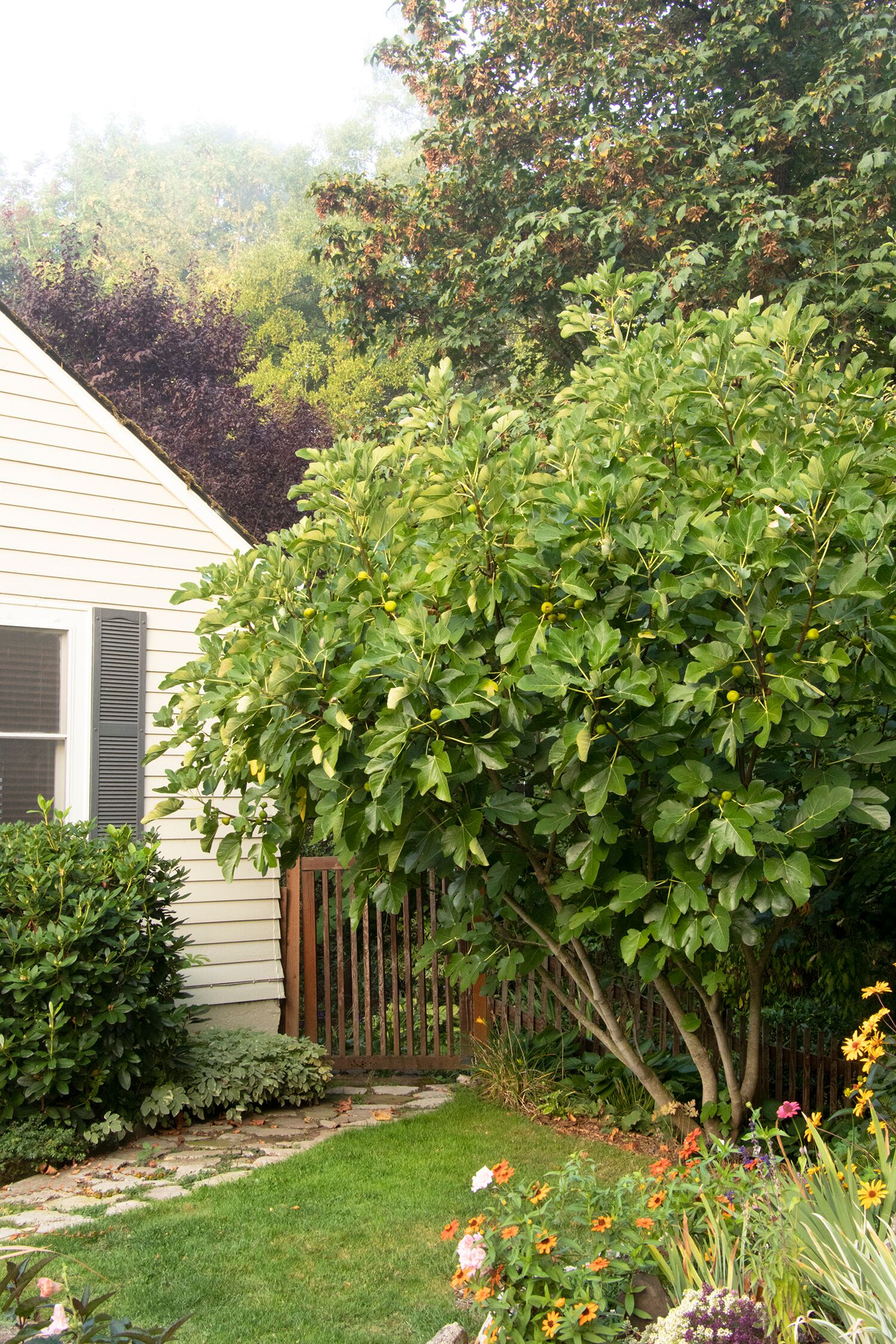
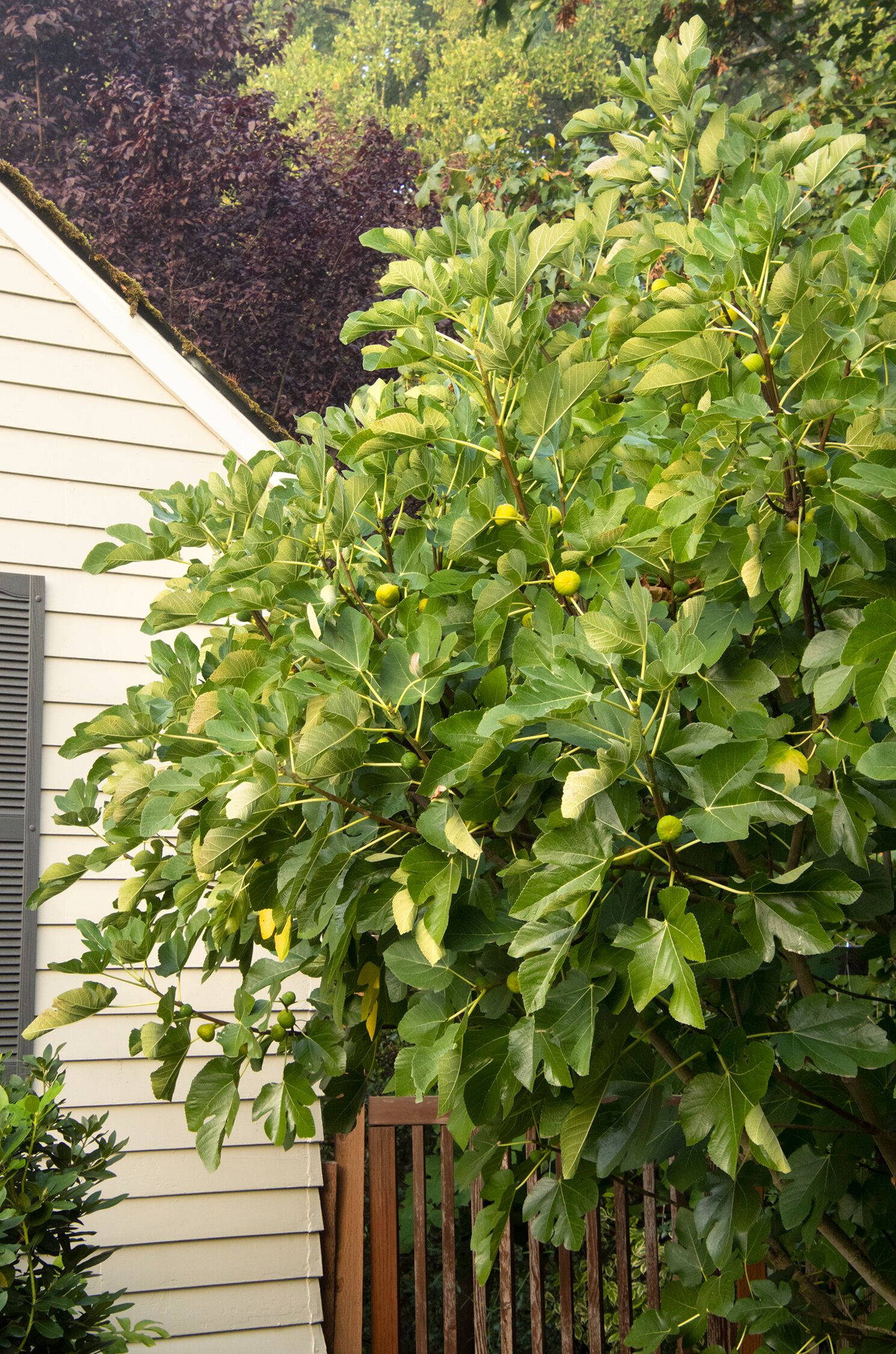
In colder zones, choose cold-hardy varieties such as 'Chicago Hardy Fig' and 'Desert King.' Also, consider other selections that are somewhat less cold-hardy. Ones that can grow in big pots and protect during the winter by storing in a cool garage or basement.
In desert climates, fig trees may benefit from some shade, particularly during the hottest parts of the day. If your fig tree is planted in an area that receives excessive shade, this could be the reason why it's not producing fruit. So, when choosing a location for your fig tree, prioritize sun exposure to ensure a healthy and productive plant!
Planting Your Fig Tree
Mature fig trees can be 15 to 30 feet tall. Space a bit apart so that you can really see the unique shape of the mature tree. Several fig varieties stay naturally small and fit nicely into large containers (see below). If you have the room, plant several and choose early-, mid-, and late-fruiting varieties. This will extend the harvest from early summer into early fall. Some figs will produce fruit very early in the season, called a “breba” crop, as well as the main crop.
When planting, ensure the hole is twice as wide as the rootball. Unlike other fruiting plants, you can plant the rootball deeper than the soil surface. Adding compost or well-rotted manure to the planting hole can enhance soil fertility and structure, promoting healthy growth. Water well after planting to settle the soil around the roots.
The ideal soil temperature is around 78°F, and prolonged exposure to temperatures above 110°F or below 10°F can be harmful. If you live in zones 5 or 6, opt for a hardy fig variety and provide winter protection, such as wrapping or covering the tree, to safeguard it from cold damage and ensure regular harvests.
Essential Care Tips for Fig Trees
- Watering: Fig trees require consistent soil moisture, especially during the growing season. Once established, figs can be very low maintenance and drought tolerant. During the first year, as plants become established, water regularly and mulch. If conditions get too dry, an occasional deep watering will keep the tree healthy.
- Fertilizing: While they aren't too picky about their soil, fig trees enjoy a well-draining, loamy soil with healthy organic matter. Adding a layer of compost around your fig trees yearly can provide the right amount of nutrients. It also adds organic matter to help your fig tree thrive.
- Pruning: When pruning fig trees, avoid excessive pruning as it can disrupt the tree's hormonal balance and hinder fruit production in the next growing season. Instead, focus on thinning cuts and always wear gloves to protect yourself from the tree's sap. After the first 2-3 years, they need little pruning apart from removing weak, diseased, or dead branches. It's best to prune fig trees when they are dormant in late winter.
- Repotting: When repotting fig trees, choose a container one size larger than the current nursery pot, ensuring it has multiple drainage holes. Fill the new container with high-quality potting soil rich in organic matter, plant the tree so the top of the root ball is level with the soil and water well, and remember that containerized fig trees require more frequent watering.
Winter Care
While figs are well adapted to warm climates, they are hardier than you might think. The roots of a fig can survive colder temperatures than the wood above ground, so while a cold snap might cause your fig to die back to the ground, a well-established root system will send out vigorous new growth in spring. Since most of a fig's fruit production is on new wood, you can still get fruit that year. There is not an exact temperature that you can expect your fig to die to the ground, but generally, it starts becoming a possibility below 20°F, and is likely when temperatures dip into the single digits. Exposure to harsh winter winds can increase the chance of dieback, so locating your fig near a building can provide extra protection.
The roots of figs in containers are less protected than those planted in the ground. If you can't bring a potted fig into a cool garage or basement for the winter, consider insulating or burying the container for extra protection.
If you would prefer to keep the wood alive through the winter, you can wrap your fig with burlap, canvas, or a tarp. For even more protection, the wrap can be filled with organic material like straw or dry leaves for extra insulation. Very young trees are more prone to winter damage and death, so make sure to give your newly planted trees some extra protection.
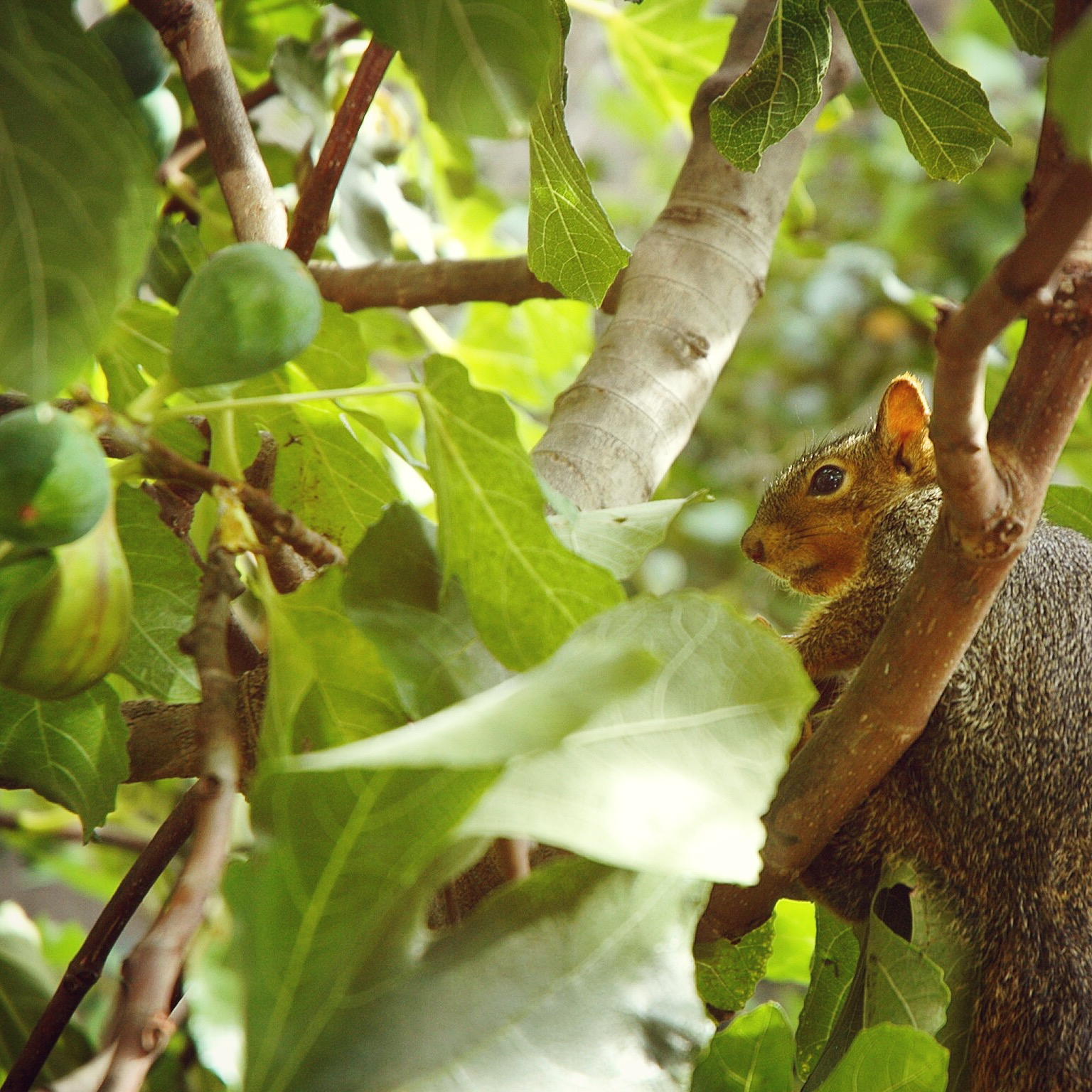
Pest and Disease Control
Fig trees are generally resilient against common pests and diseases, but monitoring them and taking necessary action is still crucial. Fruit flies are a common pest that lay larvae in fermenting fruits, which can be prevented by using traps, disposing of fallen fruits, and not planting more fig trees or fruiting plants than you can manage.
Birds, squirrels, deer, and other animals can also be a challenge for fig tree owners. Yes, they love figs. The trick is to stay ahead of them by harvesting daily. If you wait too long, they'll get to your harvest first. Nets, traps, and fencing are also generally the most effective solutions. Creating a ring around your tree with chicken wire can keep out groundhogs and most non-climbing animals that love eating figs.
Fungal diseases like fig rust can be prevented by pruning the tree to improve air circulation and avoid overhead watering. If necessary, fungicides can be used as a preventative measure to control the spread of the disease.
Harvesting and Using Your Figs
This is the moment! When fruit is developing, it’s important to water regularly. Check daily, and pick just as they ripen. You'll pick the main crop of fruits depending on your climate and conditions, anywhere from June to September in warmer inland areas to October and November in cooler coastal places. Fig trees may bear fruit in some tropical locations throughout the year. With increased production in early summer and midwinter.
How to Harvest and Store Fresh Figs
To determine when to harvest, feel the softness of the fig's neck as figs ripen from the bottom to the top. Other signs of ripeness include changes in skin color, drooping of the fruit, cracking in the skin, a drop of honey at the eye, and an increase in fruit size. Picking figs at the right time prevents them from becoming overripe and falling off the tree.
After harvesting figs, proper storage and preservation methods are essential to extend their shelf life. Store figs in a cool, dry place like a refrigerator for short-term storage. For long-term storage, freeze figs by cutting off their stems, placing them in a single layer on a baking sheet to freeze, then transferring them to an airtight container or freezer bag.
Figs can be preserved through various methods, such as:
- Drying: Slice fresh figs and dry them in a dehydrator or oven to make a popular snack.
- Canning: Pack fresh figs in syrup or juice and process them in a water bath canner.
- Making Preserves: Cook fresh figs with sugar and lemon juice until thickened, then can the mixture in jars.
Top 10 Best Fig Trees
Fignomenal® Dwarf Fig
This petite fig is perfect for small gardens, narrow beds, and containers! With a modest height and width of just 28 inches, it effortlessly fits into limited spaces, whether indoors or outdoors. Despite its size, this fig variety boasts medium-sized fruits. Full sun. Up to 28" tall and wide. Zones 7-10.
Fruits: A deep-brown exterior and a delightful pink-red interior that is irresistibly sweet. Prepare for a bountiful harvest throughout the year, as this remarkable plant fruits heavily, ensuring a continuous supply of delectable figs.
Peter’s Honey Fig
Originally from Sicily is an attractive garden tree. Needs plenty of heat to ripen fruit in cooler areas. Up to 25′ tall and wide. Full sun. Zones 7–9.
Fruits: Soft-skinned, yellow-green with honey-like amber-hued flesh. Great for preserves.
Mission Fig
Cultivated in the western US since 1768. It's loved for its tall and wide habit that offers dense summer shade and abundant fruits. Up to 35′ tall and wide. Full sun. Zones 7–9.
Fruits: Deep blue-purple with deep-pink syrupy sweet flesh. Lovely dessert fruit.
Black Jack Fig
Wonderful container plant and cold-hardy, too. Up to 15′ tall and wide; easily kept to 6′ with annual pruning. Full sun. Zones 7–9.
Fruits: Elongated purple fruit with strawberry-red juicy flesh; sweetest with plenty of heat. Chop and add to salads.
Brown Turkey Fig
Site where you can easily harvest its two yearly crops. Medium size, good for screening or as background. Up to 25′ tall and wide. Full sun. Zones 7–9.
Fruits: Deep-purple with rose-hued sweet flesh. Mild flavor pairs well with goat cheese.
Desert King Fig
Exceptionally productive even in cool climates like coastal regions or high elevations. Up to 25′ tall and wide. Full sun. Zones 6–10.
Fruits: Large yellowish-green, strawberry-colored flesh, sweet, melting texture. Drizzle with honey and broil.
Corky’s Honey Delight® Fig
Semi-dwarf thrives in mild coastal and warm humid areas. Can be grown in a large container. Up to 12′ tall and wide. Full sun. Zone 7–10.
Fruits: Greenish with amber-colored flesh, flavorful honey note. Great for smoothies.
Chicago Hardy Fig
One of the hardiest of its kind, endures colder zone 6 winters (great conversation piece!). Look for a large late-summer crop. Up to 15′ tall, 12″ wide. Full sun. Zones 6–10.
Fruits: Deep purple when ripe with reddish flesh. Luscious and sweet, perfect to fill a tart.
Celestial Fig
Smaller-sized tree prized for vigorous growth, improved cold resistance bountiful early harvest. Up to 10′ tall and wide. Full sun. Zones 7–11.
Fruits: Violet-brown with pinkish-purple sweet flesh. Perfect for preserves.
Kadota Fig
Treat this fig as a small shade tree or accent if you don’t have it in a fruit garden. Its green fruit is not as decorative as other figs, but some say even more delicious. Up to 25′ tall and wide. Full sun. Zones 7–9.
Fruit: Pert green skin gives way to a heart of pale amethyst. The taste is especially sweet and appealingly complex. Spoon over ice cream or yogurt.
Additional Questions about Fig Trees
Can fig trees be grown in containers?
Yes, fig trees can be successfully grown in containers, especially smaller varieties like 'Little Figgy,' 'Brown Turkey,' and 'Chicago Hardy.' Choose a container with good drainage and repot the tree as needed when it outgrows its current container.
How can I protect my fig tree from pests and diseases?
Monitor your fig tree regularly for signs of pests, such as fruit flies, and use traps or remove fallen fruit to prevent infestations. Prune the tree to improve air circulation and avoid overhead watering to prevent fungal diseases like rust.
When is the best time to prune fig trees?
Prune fig trees during their dormant period, typically in late winter or early spring, before new growth emerges. Focus on removing dead, damaged, or crossing branches, and avoid excessive pruning.
Need More Inspiration?
Turn to the gardening experts at Monrovia! You can subscribe to our monthly Grow Beautifully Newsletter to get inspiration, tips, design advice, and free digital guides delivered to your inbox twice a month.




